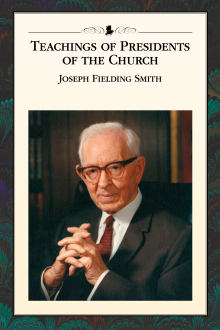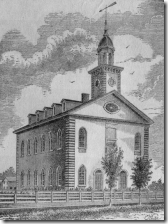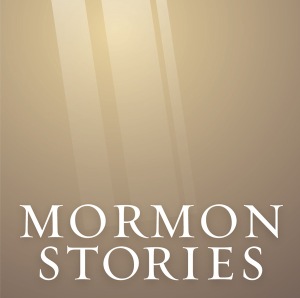Chapter 17 Review of the 2014 Teaching Manual. See chapter here.
We live in an age where the differences between religions, denominations and sects are blurring. Those who subscribe to the pluralistic point of view would argue that there is no fundamental difference between any of the major world religions. There is movement of ecumenism in the churches that emphasize our shared core beliefs rather than our distinct theological differences. There is also a movement that seeks to dampen down the key theological differences between Christianity and Mormonism. Such theological differences that are sometimes ‘smoothed over’ are the issues of grace and works, the degrees of salvation, the Aaronic and Melchizedek priesthood and the temple ordinances. The temple and the ordinances that occur within its walls are not something that can be seen publicly outside of the practicing LDS community but from what we do know, these ordinances are definitely outside the realm of standard Christianity. In the second of our chapter reviews of the Teachings of the Presidents: Joseph Fielding Smith, we shall jump forward a few chapters to investigate JFS’s views on the temple ordinances, his viewpoint on what the ordinances value is and what the underlining theology is behind these ordinances.
Mormon religious life should, in the view of JFS as well as nearly every major leader of the LDS church, revolve around the temple and the ordinances. This is definitely the case with JFS as he argues that one should go to go the temple as a necessary part of faith unless there is unable due to infirmity or extreme poverty.
These ordinances, temple marriage, baptism for the dead, initial washing and anointing and endowment are all fundamental to the practice of Mormonism. The ordinances, reserved only for the faithful in the dedicated sacred space of the LDS temple, are unique to Mormonism and due to their ‘closed’ nature are difficult to fully explain and explore but they all have some similar key foundations. These foundations are ritual as part of salvation and the family.
Our key passage today is Malachi 4:5-6:
‘See, I will send the prophet Elijah to you before that great and dreadful day of the Lord comes. He will turn the hearts of the parents to their children, and the hearts of the children to their parents; or else I will come and strike the land with total destruction.’
This passage, one of the key passages in this chapter that is referred to by JFS, is very useful in illuminating the theological foundations of the ordinances. JFS links this verse, rather unsurprisingly, to a quotation from Doctrine and Covenants:
“Behold, I will reveal unto you the Priesthood, by the hand of
Elijah the prophet, before the coming of the great and dreadful day
of the Lord. “And he shall plant in the hearts of the children the promises
made to the fathers, and the hearts of the children shall turn to
their fathers. “If it were not so, the whole earth would be utterly wasted at his
coming.” (D&C 2:1–3.)
Whilst there is no clear sign from these passages that point directly to the temple ordinances explicitly, what we do see is the theme of family. We can be even more precise with regards to this theme when we look at the terminology of ‘parents’ and ‘children’. These links between the generations appear pivotal in these passages and I am not here to argue against that but there are questions as to whether JFS’s use and interpretation of these passages necessarily lead logically to the conclusions that JFS uses to support temple ordinances.
When we consider LDS theology we cannot escape the fundamental idea of family. Baptism for the dead brings those who we on earth have lost into the eternal family even if they were not Mormons in life. Temple marriages involve sealings that bind the parties together in eternal marriage for all eternity. Receiving the endowments are necessary for the progression to the celestial kingdom that involves the family that was bound together on earth. There is a doctrine/theological thought within Mormonism called the patriarchal chain that emerges from Abraham 2:9-11.
9 And I will make of thee a great nation, and I will bless thee above measure, and make thy name great among all nations, and thou shalt be a blessing unto thy seed after thee, that in their hands they shall bear this ministry and Priesthood unto all nations;
10 And I will bless them through thy name; for as many as receive this Gospel shall be called after thy name, and shall be accounted thy seed, and shall rise up and bless thee, as their father;
And I will bless them that bless thee, and curse them that curse thee; and in thee (that is, in thy Priesthood) and in thy seed(that is, thy Priesthood), for I give unto thee a promise that this right shall continue in thee, and in thy seed after thee (that is to say, the literal seed, or the seed of the body) shall all the families of the earth be blessed, even with the blessings of the Gospel, which are the blessings of salvation, even of life eternal.(Abraham 2:9-11)
This ‘chain’ links the practicing Mormons of the present back through the generations to Abraham, Adam and the beginning of the human race on earth. One is fused into this chain by faithful Mormon living and by observing the ordinances. When we consider the ordinances in light of the passages above, it is not all that hard to see the link. ‘The hearts of the children turning to the fathers’ verse is typical of how humanity as a whole, in general, views their relationship with their parents and elder relatives. The pain of losing those relatives and not being with them again can be unbearable. Anyone who dismisses the emotion that can be involved in such things is being realistic. It is not surprising therefore that a theology can develop around turning to their forefathers and seeking to be bound together for all eternity. Surely the Lord, the almighty, all loving God would want our families to be together if that is such a primordial desire? Such a viewpoint, whilst immensely credible when we consider our own feelings and desires, does have some serious problems.
It would be fair to say that JFS’s interpretation of Malachi 4 is not the only interpretation. A standard Christian interpretation of this section would not end with the focus on family but on promise. The ‘hearts of the children shall turn to their fathers’ because of the promises that have been placed into the hearts of the children that the Lord made to their fathers. These promises are the promises of the coming Christ, given that Malachi came before the coming of Christ and the promises of God after Christ died and was resurrected. These promises are that the God of their fathers, the God who saved and walked with their fathers is the God who saves and walks with them. So what can conclude when we compare the two interpretations? It would be fair to say that this passage isn’t necessarily explicit either way but there is more evidence for the Christian interpretation of promises of Christ compared to the evidence for sealings and ordinances of JFS’s interpretation. This isn’t necessarily because there is a lot of evidence for the Christian perspective but because it is difficult to see any evidence for this interpretation in Malachi 4. The passage says nothing of sealings to family for eternal marriage or the patriarchal chain explicitly and it is difficult to see an implicit reading. Disrespecting the fathers and the elder generations is definitely not in the Lord’s plan. The Lord wants us as children to look to the fathers and the promises made, that much is clear but to make the link to sealings and temple ordinances is a massive leap. There is also nothing to lead to this conclusion in the Doctrine and Covenants section that JFS refers to. The similarities between the Malachi passage and the D&C section are striking but this passage is no more explicit or implicit in supporting this reading.
The theology of these ordinances can also be called into question. What is the theological point of these rituals within Mormonism? Before we can answer this question, we must ask ourselves, what are the main theological points of the Christian rituals of baptism and communion? These rituals, whilst considered key to living out the Christian life are not considered necessary for salvation. The necessity for salvation within Christian theology is faith. Other works are unnecessary and unhelpful if they replace faith. The temple ordinances, performed in the holy of holies are essential for progression to from ‘mere’ salvation to exaltation in the celestial kingdom and the eternal family. Whilst the Christian key rituals are not necessary ultimate goal within Christianity, the temple ordinances are necessary within Mormonism. Let us consider what JFS says on page 220:
“Temple work is so interwoven with the plan of salvation, that one cannot exist without the other. In other words, there can be no salvation where there [are] no temple ordinances peculiarly belonging to the temple.”
When we consider this passage, it is not erroneous to suggest that JFS believes that temple work is woven into salvation, cannot be removed from salvation, and are fundamentally necessary not only to the Mormon idea of salvation but for exaltation as well. Bearing this in mind, the logical conclusion is that temple sealings, blessings and work are key to the Mormon understanding of salvation exaltation and glory and this is fundamentally different to the Christian understanding of salvation. The differences between the Mormon and Christian understandings can also be seen in re readings of the passages we have mentioned. JFS’s theology of sealings and temple work as necessary doesn’t seem to be firmly established in the Malachi and Doctrine and Covenants passages he quotes. The patriarchal chain cannot be found when reading the text for an implicit reading.
It is possible to discuss a wide range of topics when we think of temple ordinances. We can consider the need for a temple in post-Christ times. We could consider the links that have been raised between temple ordinances and freemasonry. We could consider the secrecy of the temple and the need to be worthy to enter. What we need to consider though when we consider the temple ordinances and the theology of JFS however, what we can clearly see is the difference between the Mormon understanding of salvation, exaltation and the celestial kingdom and the Christian understanding of salvation by faith alone without additional works or rituals. When we consider the differences, it cannot be concluded that these gospels are the same.




